
The Lada Niva Legend, formerly called the Lada Niva, VAZ-2121, VAZ-2131, and Lada 4×4, is a series of four-wheel drive, small (hatchback), and compact off-road cars designed and produced by AvtoVAZ since 1977. Initially aimed at the rural market, later models also targeted urban users. The three- and later five-door 4×4 hatchbacks were sold under the Lada marque in many markets, and have been in continuous production since 1977.
Radio-controlled cars, or RC cars for short, are miniature model cars, vans, buses, trucks or buggies that can be controlled from a distance using a specialized transmitter or remote. The term "RC" has been used to mean both "remote controlled" and "radio-controlled". "Remote controlled" includes vehicles that are controlled by radio waves, infrared waves or a physical wire connection. RC cars are powered by one of three energy sources—electricity, nitro fuel or petrol. Electric RC models are powered by small but powerful electric motors and rechargeable nickel-cadmium (Ni-Cd), nickel metal hydride(NiMH), or lithium polymer (LiPo) cells with the latter two being the most used. Both NiMH and LiPo have advantages and disadvantages in various RC applications where NiMH is mainly used for recreational purposes and LiPo for more demanding purposes. There are also brushed or brushless electric motors—brushless motors are more powerful, long lasting and efficient, but also much more expensive than brushed motors.

Sid Krofft and Marty Krofft, known as The Krofft Brothers and born as Cydus and Moshopopoulos Yolas, were a Canadian sibling team of television creators, writers and puppeteers. Through their production company, Sid & Marty Krofft Pictures, they made numerous children's television and variety show programs in the U.S., particularly in the 1970s, including H.R. Pufnstuf, Land of the Lost, and Sigmund and the Sea Monsters. Their fantasy programs often featured large-headed puppets, high-concept plots, and extensive use of low-budget special effects.

A bumper sticker is an adhesive label or sticker designed to be attached to the rear of a car or truck, often on the bumper. They are commonly sized at around 25.4 cm by 7.6 cm and are typically made of PVC.

The Fiat 127 is a supermini car produced by Italian car manufacturer Fiat from 1971 to 1983. It was introduced in 1971 as the replacement for the Fiat 850. Production of the 127 in Italy ended in 1983 following the introduction of its replacement, the Fiat Uno, although the nameplate continued to be used on cars imported from Brazil.

The Fiat Panda is a city car manufactured and marketed by Fiat since 1980, currently in its third generation. The first generation Panda, introduced in 1980, was a two-box, three-door hatchback designed by Giorgetto Giugiaro and Aldo Mantovani of Italdesign and was manufactured through 2003 — receiving an all-wheel drive variant in 1983. SEAT of Spain marketed a variation of the first generation Panda under license to Fiat, initially as the Panda and subsequently as the Marbella (1986–1998).

The Renault 4, or R4 in short, is an economy car built by the French company Renault from 1961 to 1994. Although the Renault 4 was first marketed as a short estate or wagon, its minimal rear overhang, and its top-hinged, single-piece tail-gate made it the world's first mass-produced hatchback car, as well as the first time Renault had used a front-wheel-drive layout in a family car. A bare-bones, entry-level Renault 3, or R3 was also offered in 1961/1962.

A Baja Bug is an original Volkswagen Beetle modified to operate off-road, although other versions of air-cooled Volkswagens are sometimes modified as well. Baja bugs often race in off-road desert races such as the Baja 1000. There are different classes for bugs, namely class 11, class 5 1600, and class 5 unlimited. According to desert racing association Score International, class 11 is a stock VW beetle with modifications limited to ground clearance and strength. Class 5 1600 rules state that a 1600 cc VW engine must be used and the car must have the exterior appearance of a "baja bug" with body modification limited to whatever cutting is needed to install a consumer baja kit. Class 5 unlimited is any 4 cylinder VW-style engine, and it must have Baja-style fenders and side panels, and VW-style suspension.
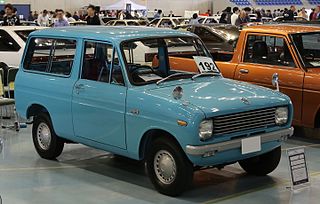
The Mazda Porter and Porter Cab are a series of small kei trucks that were produced from 1961 to 1989 by Mazda, mainly for sale in the domestic Japanese market. Export versions of the Porter were labelled E360. The Porter was replaced by the Autozam Scrum, a rebadged Suzuki Carry.
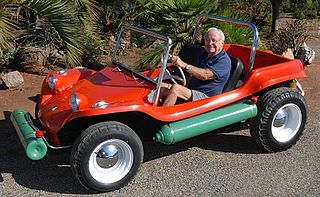
The Meyers Manx dune buggy is a small recreationally-oriented automobile, designed initially for desert racing by Californian engineer, artist, boat builder and surfer Bruce F. Meyers. It was produced by his Fountain Valley, California company, B. F. Meyers & Co. from 1964 to 1971, in the form of car kits applied to shortened chassis of Volkswagen Beetles. The car line dominated dune racing in its time, breaking records immediately, and was eventually also released in street-oriented models, until the company's demise due to tax problems after Meyers's departure. New vehicles inspired by the original Manx buggy have been produced by Meyers's re-founded operation, Meyers Manx, Inc., since 2000. The name and cat logo of the brand derives from the Manx cat, by virtue of the tailless breed's and the shortened vehicle's truncated "stubbiness".
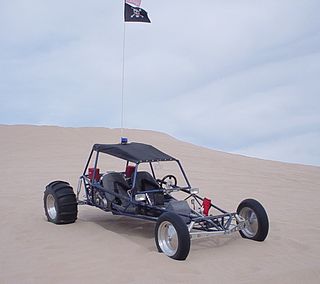
A sandrail, also called a sand rail, rail, or sand car, is a lightweight off-road motor vehicle specifically built for traveling in sandy terrain. Synonymously referred to as dune buggies, a sandrail is a type of speciality vehicle. Sandrails are popularly operated on actual sand dunes. Sandrails can be driven on other types of terrain but are designed specifically for sand.

Speed Buggy is an American animated television series, produced by Hanna-Barbera, which originally aired for one season on CBS from September 8, 1973, to December 22, 1973. With the voices of Mel Blanc, Michael Bell, Arlene Golonka, and Phil Luther Jr., the show follows an orange anthropomorphic dune buggy who alongside teenagers Debbie, Mark, and Tinker, solves mysteries while participating in racing competitions around the world. The series was produced by Iwao Takamoto, executive produced by William Hanna and Joseph Barbera, and directed by Charles A. Nichols.
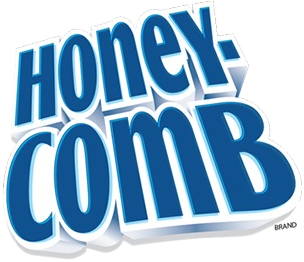
Honeycomb is a breakfast cereal first released in 1965, owned by Post Holdings. It consists of honey-flavored corn cereal bits in a honeycomb shape.

The Autobianchi A112 is a supermini produced by the Italian automaker Autobianchi. It was developed using a shrunken version of the contemporary Fiat 128's platform. The mechanicals of the A112 subsequently underpinned the Fiat 127. It was introduced in November 1969, as a replacement for the Bianchina and Primula, and was built until 1986, when it made way for the more modern Autobianchi Y10. Over 1.2 million A112s were produced in Autobianchi's Milan factory.
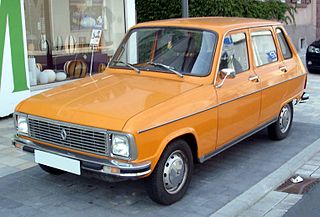
The Renault 6 or R6 is an economy C-segment small family car, manufactured and marketed by French automaker Renault from 1968 to 1986. The R6 entirely used the Renault 4's platform, initially including its small 845 cc (51.6 cu in) engine, and was technically near-identical, but its five-door hatchback body was larger and more modern. Visually it resembled the larger Renault 16, but distincly boxier.

The Suzuki Fronte is an automobile introduced in March 1962 as a sedan version of the Suzulight Van. The nameplate remained in use for Suzuki's Kei car sedans as well as some commercial-use derivatives until it was replaced by the Alto in September 1988.
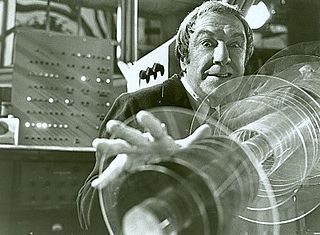
Dr. Shrinker was a segment during the first season of the ABC network's The Krofft Supershow in 1976.
The Short-course Off-road Drivers Association was a short course off-road racing sanctioning body in the United States.

The Brady Bunch Hour is an American variety show featuring skits and songs produced by Sid & Marty Krofft Productions in association with Paramount Television. It ran on ABC from November 28, 1976, to May 25, 1977.

The Krofft Supershow is a Saturday morning children's variety show, produced by Sid and Marty Krofft. It aired for two seasons from September 11, 1976, to September 2, 1978, on ABC.


















